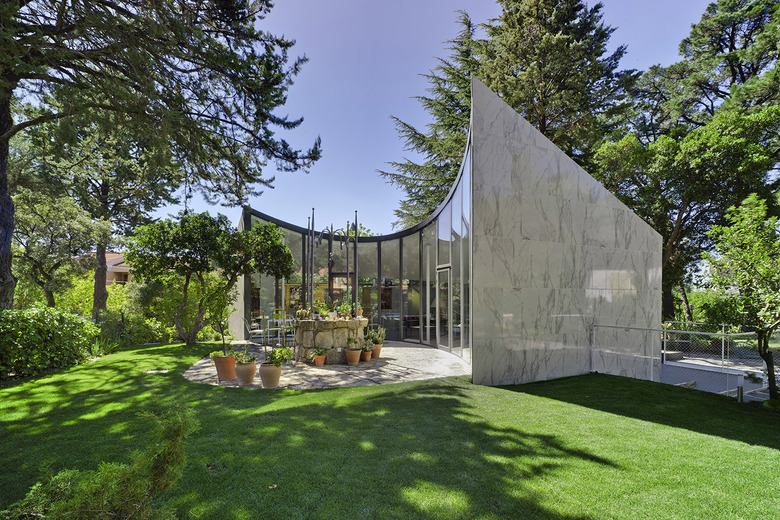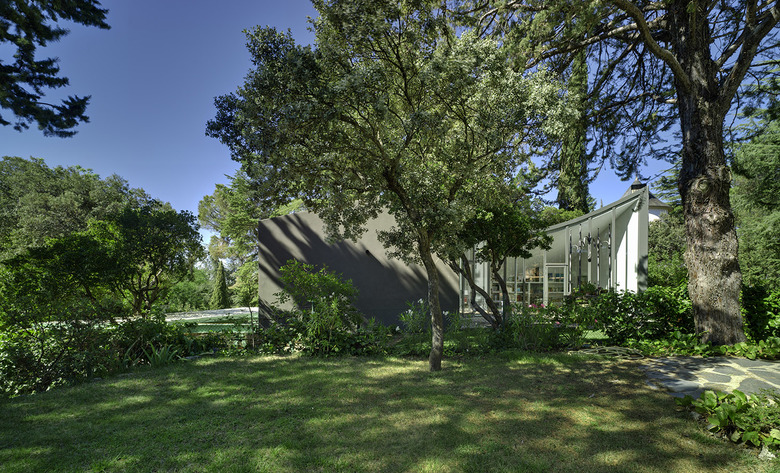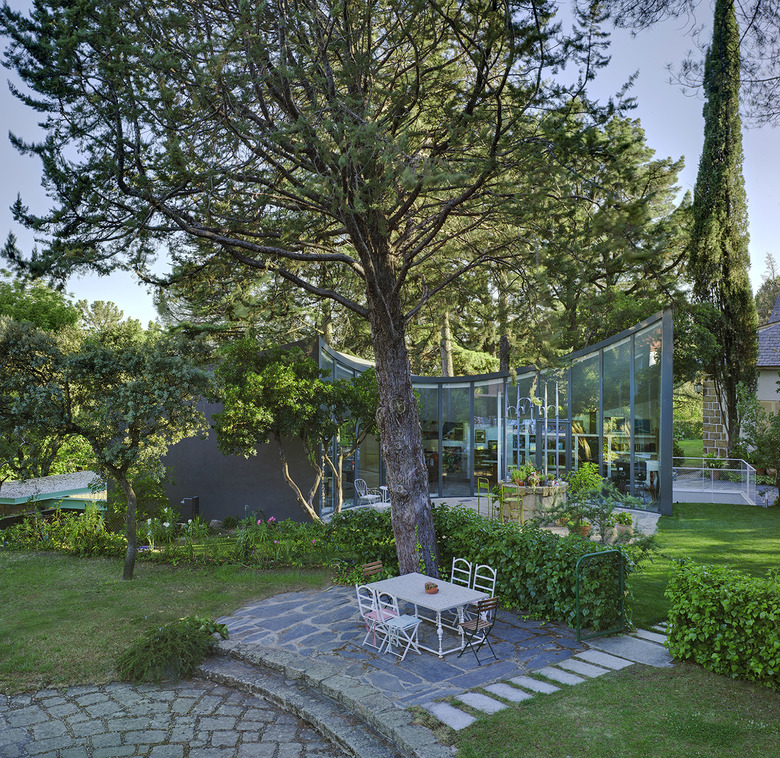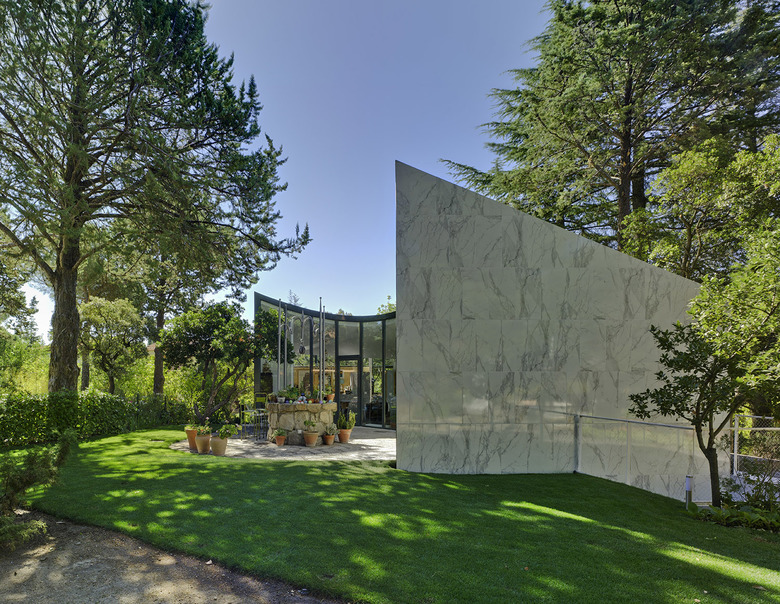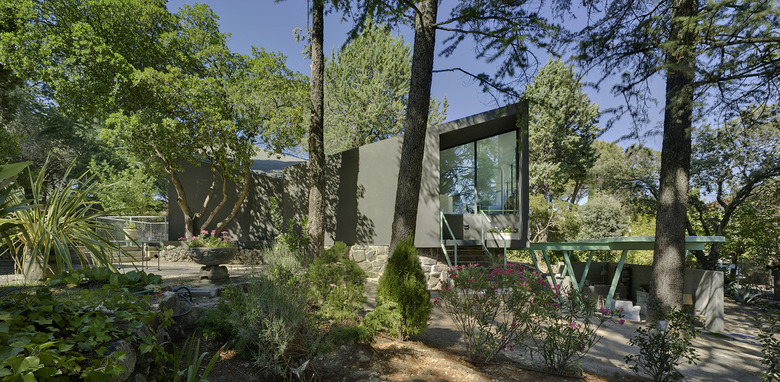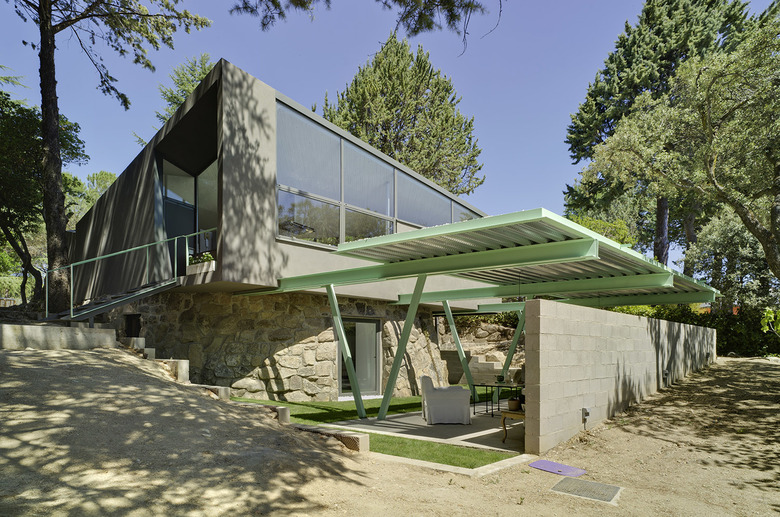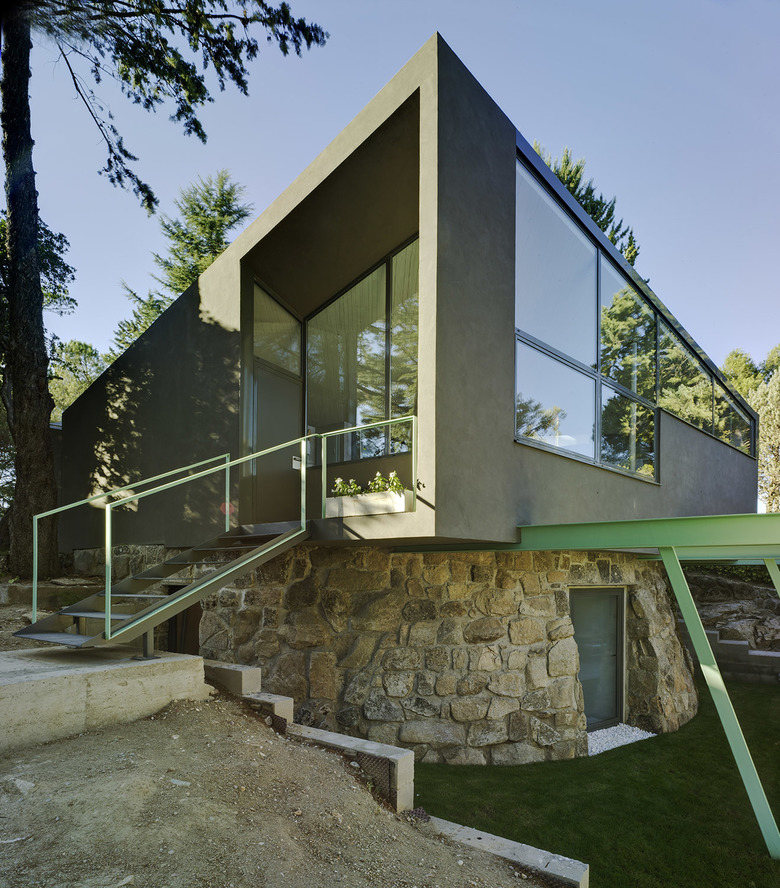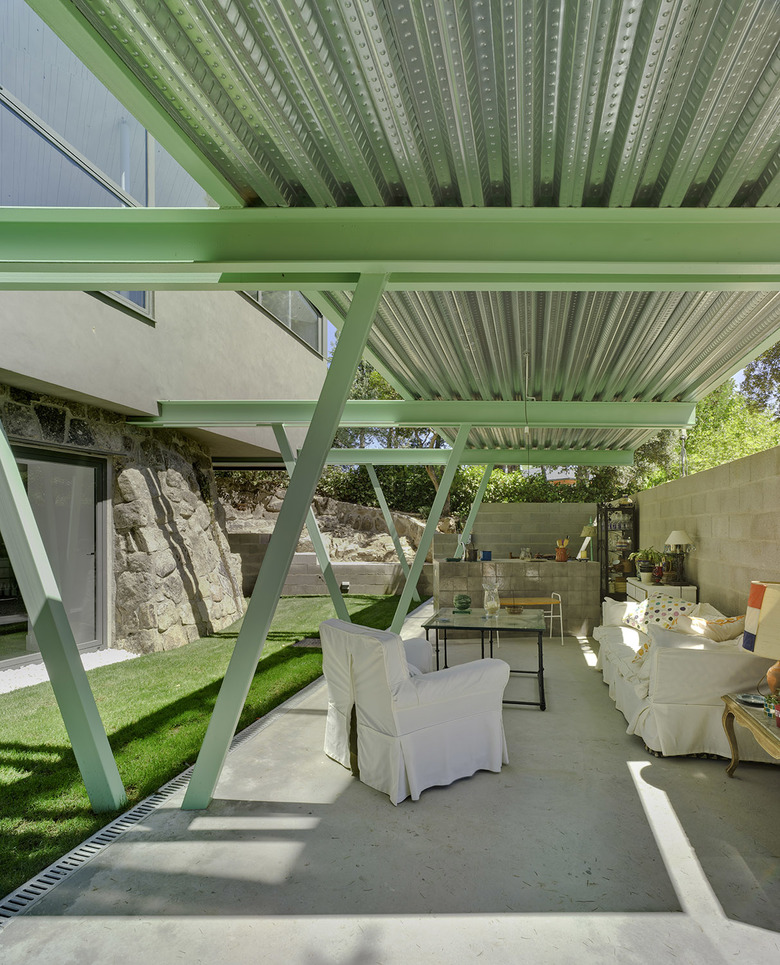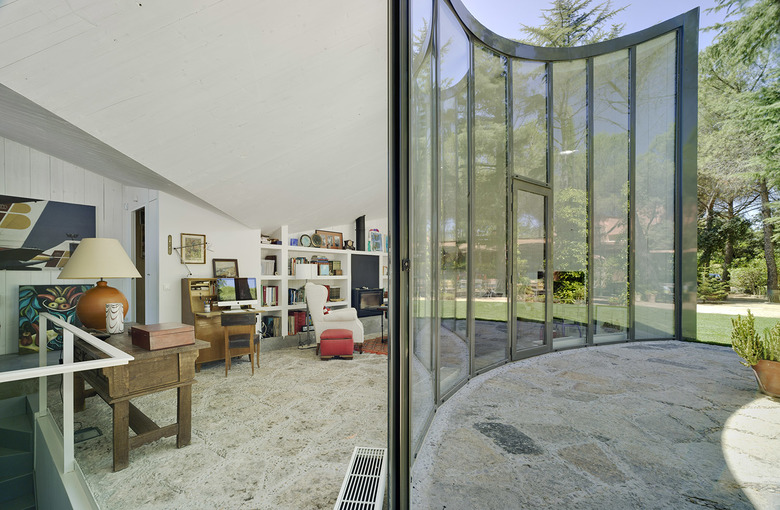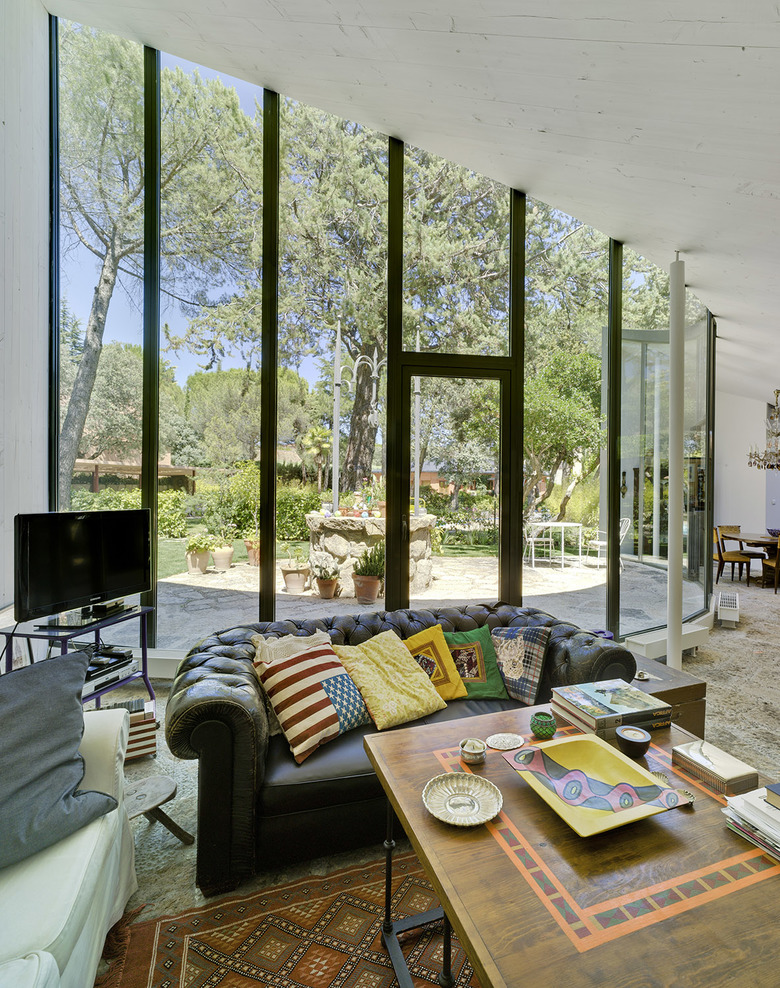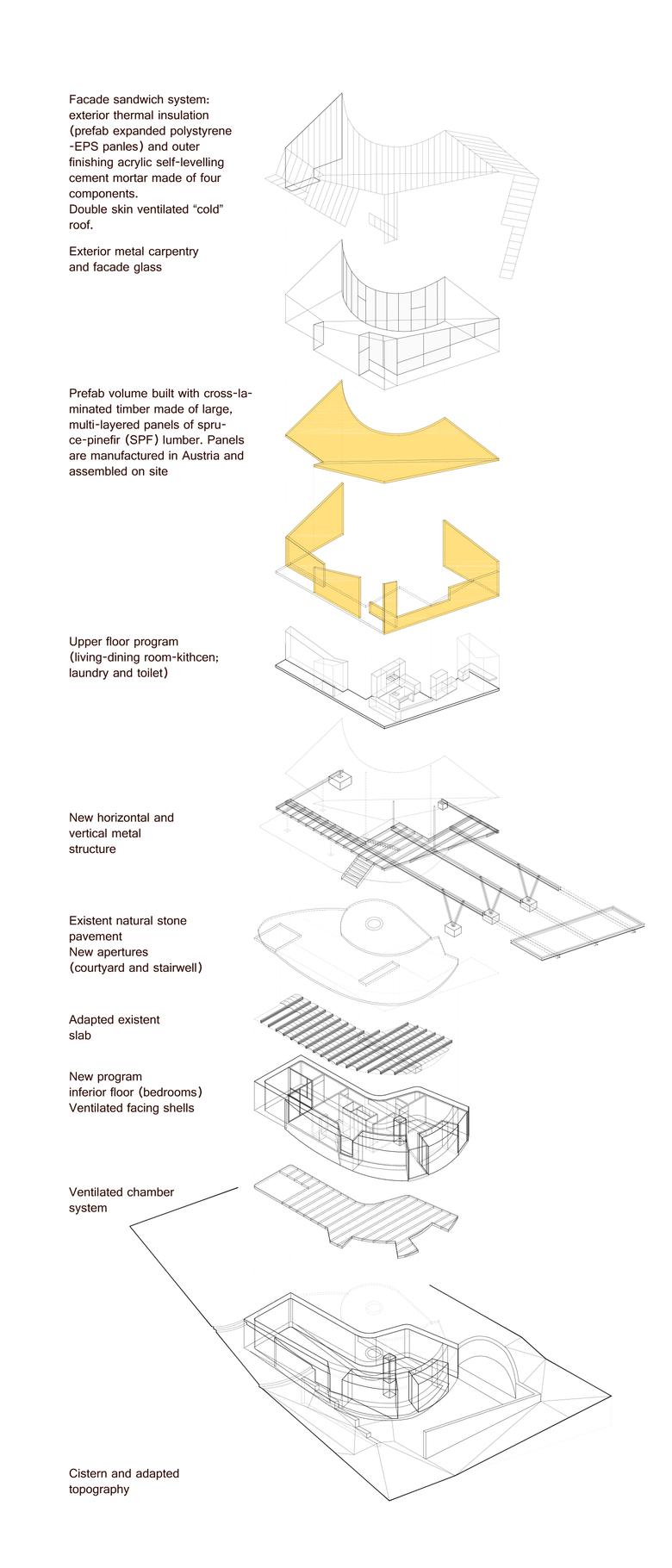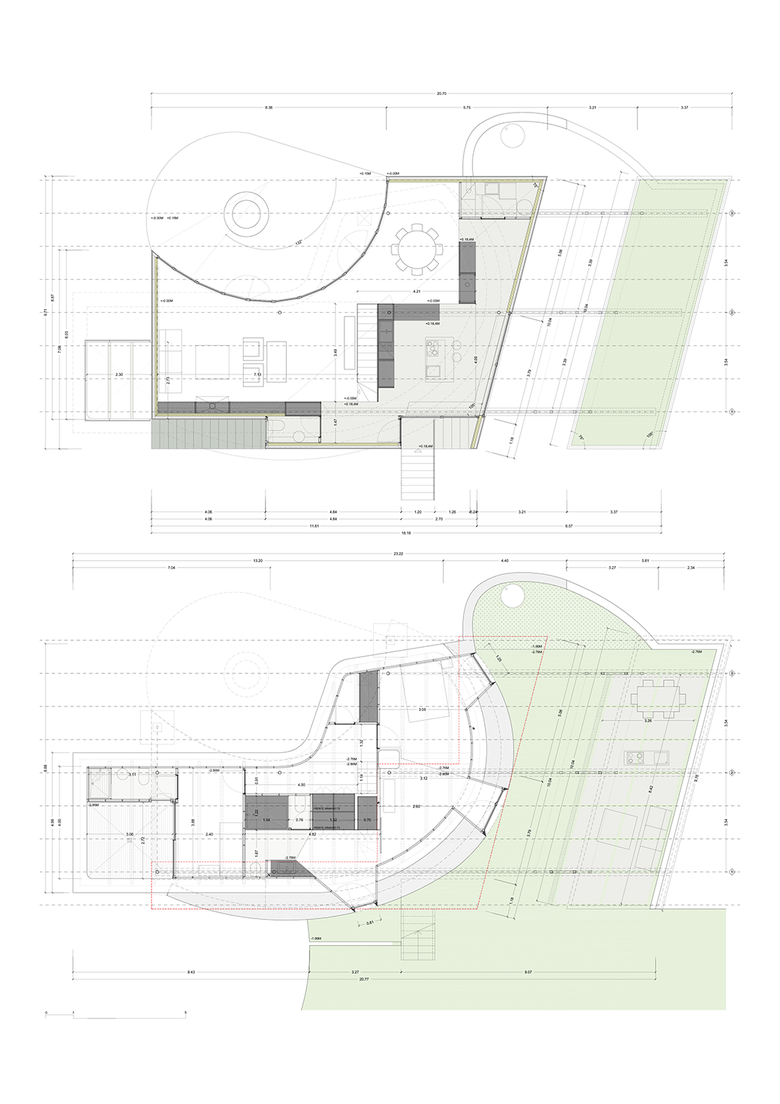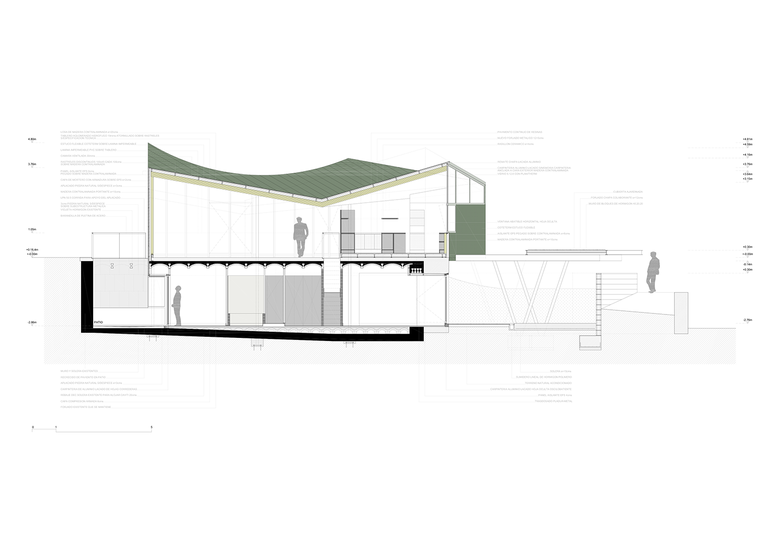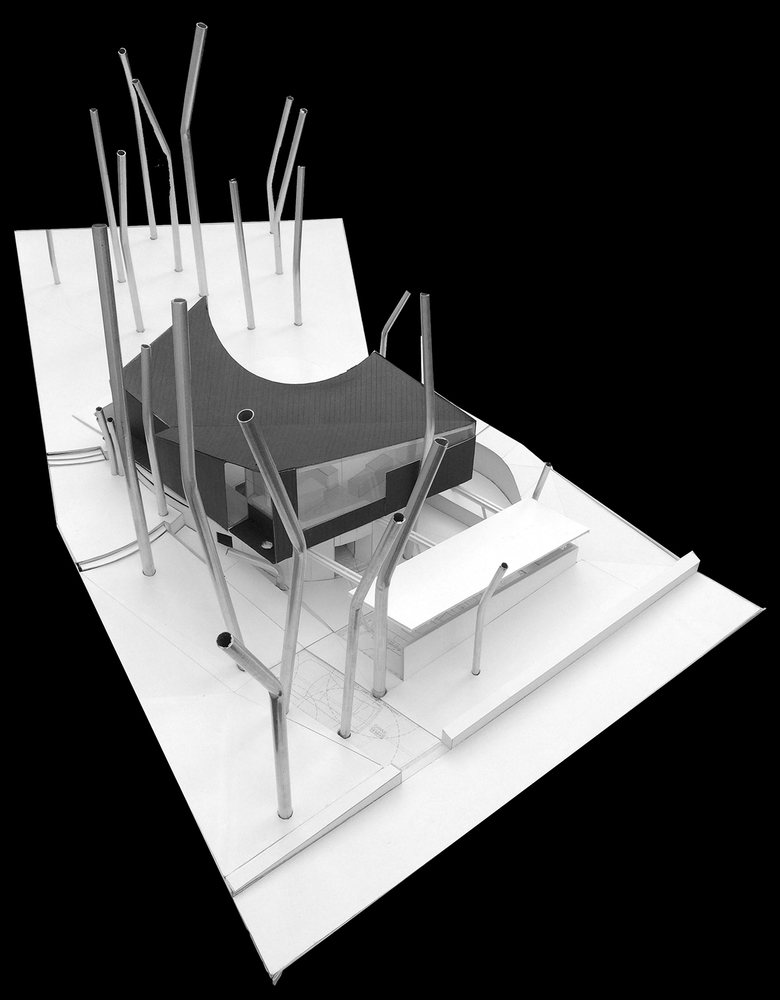Valdivieso Arquitectos
Single House Reusing a Former Water Cistern
Valdivieso Arquitectos
3. January 2017
Photo: David Frutos – BIS IMAGES
Building a single-occupancy home over a former water cistern was the starting point of the project. The site, subsequently altered over time, reached its final configuration circa 1955. It has two levels, facing south, and has remained unaltered since then.
The site is part of a low-density suburban environment, which belongs to a development model distinctive of peripheral areas, characteristic of the first third of the 20th century as the summer stays residential areas in the mountain range of Madrid. The site contains typical scrubland vegetation, increased with non-native but suitable species, conditioned by the region´s dry continental climate (very warm summers and very cold winters).
Photo: David Frutos – BIS IMAGES
It was initially an underground cistern connected to a well that supplied the main and original building of the state. It presented informal floor plan geometry, probably due to the adaptation to a rocky ground. The unevenness of the ground propitiated the surfaced of the southern side of the fabric, which adopted the image of a strong retaining wall that confined, on this side, an upper paved platform where is located the well head, and which was occasionally used as space for celebrations. When the cistern no longer fulfilled its mission, it started to be used as a warehouse and storage room for all sort of objects and utensils, but without any other adaptation than an entrance aperture. The interior constructive and structural configuration was then revealed. This was the first re-appropriation, yet the place continued maintaining its initial ethos as an accessible exterior space, that hides, underground, a warehouse.
Photo: David Frutos – BIS IMAGES
Photo: David Frutos – BIS IMAGES
The final re-appropriation occurred with the transformation of the site in order to address the commission. Neither the immediate environment nor the toponymy is modified; quite the opposite, the pre-existing is accepted as a possible trace pattern (the curved glass façade follows the trace of the former step to be maintained). On the former paved platform emerges a perched object that moves forward and overhangs facing south over the novel empty space produced by the unevenness of the terrain. The inferior ground level is slightly lowered in order to, with the creation of a new enveloping wall, create a veranda that is placed outside the former platform atmosphere, and that now boasts being, at once, interior and exterior.
Photo: David Frutos – BIS IMAGES
Photo: David Frutos – BIS IMAGES
The upper floor of the house occupies the new prefabricated volume built with cross-laminated timber made of large, multi-layered panels of spruce-pinefir (SPF) lumber sitting on top of a new metallic structure that does not interfere structurally with the old massive structure; composed of natural stone, ceramic brick and concrete. This volume shapes a big open space that works simultaneously as living/dining room and kitchen, communicating the house with the common garden. The lower level, partially buried, includes the private and intimate spaces, fragmented rooms of retreat, opened to a patio and to the aforementioned private interior-exterior porch veranda facing a pre-designed artificial landscape unlike the natural picturesque of the common garden.
Photo: David Frutos – BIS IMAGES
Photo: David Frutos – BIS IMAGES
A building envelope of the new volume has been designed with a high degree of thermal insulation concerning a distribution of blind/open planes that optimizes natural lighting and cross ventilation (in response to the oriented geometry embedded within the existent landscape and to the a new landscaping strategy as a summer/winter passive conditioner); in addition to those other conditions particular to the pre-existing cistern volume (massiveness, natural ventilation, distribution of window spaces and apertures, spaces semi buried and "cave or grotto effect"; reinforces the energy concept of the house, fundamentally based on passive measures.
Photo: David Frutos – BIS IMAGES
Photo: David Frutos – BIS IMAGES
PROJECT DETAILS
Location
Alpedrete, Madrid, Spain
Architect
Alejandro Valdivieso – Valdivieso Arquitectos
Collaborators
Ángel L. Valdivieso, architect; David Verdú, quantity surveyor; Fernando de la Torre, Carmen Bruna y Patricia Lobo; students
Project Management
Alejandro Valdivieso (architect)
Joaquín Jesús Cepas Flores (quantity surveyor)
Consultants
Miguel Nevado – KLH Systems Austria (cross-laminated timber panels)
Contractor
Construcciones Eugenio Herranz S.L.
alterMATERIA (management and assemblage de cross-laminated timber panels)
Design
September 2012 – September 2013
Construction
December 2013 - February 2015
Built-up area
198,62 sqm
Photographs
David Frutos – BIS IMAGES
